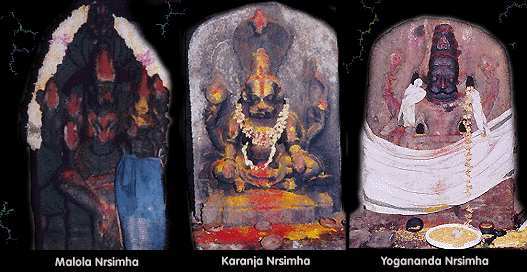No products in the cart.
1) FOUR VARIETIES OF A SINGLE MANGO TREE
There is a Mango tree inside the famed Ekambareshwarar Shiva temple in Kanchipuram which is supposed to be more than 3500 years old & till today yields 4 varieties of mangoes ( 4 varieties from a single mango tree), signifying the four Vedas. Ekambareswarar Temple is, in fact, one of the Pancha Bhootha Sthalams or representations of nature’s five elements. Among the five elements, the Ekambareswarar Temple represents – Earth.
The legend narrates the story of Goddess Parvati doing penance to appease Lord Shiva and how he tested her before accepting her as his wife. While Goddess Parvati was engrossed in her meditation under a mango tree, Lord Shiva sent fire to disturb her. The goddess prayed to Lord Vishnu to prevent any break in her penance from the fire. Next, Lord Shiva sent Goddess Ganga for the same purpose. Goddess Parvati prayed to Goddess Ganga that they are sisters and that she should be protected. Goddess Parvati made a Shiva Lingam out of the sand and she united with Lord Shiva who emerged from the Lingam. Therefore, the presiding deity of the this temple is also known as Ekambareswarar, meaning Lord of Mango tree (Eka-Amar-Natha). The path to the tree has a Shiva Lingam made of around 1008 small lingas.
There’s another story relating to the Ekambareswarar Temple. While Goddess Parvati meditated on the Prithvi Lingam under the Mango tree, the neighboring Vegavati river overflew and threatened to engulf the Prithvi Lingam. In order to protect the lingam, Goddess Parvati embraced it. Pleased by her devotion, he appeared before her and married her.
2) BRAHMA, VISHNU AND SHIVA MERGED INTO ONE
Suchindram temple is unique in the whole of India in respect to the fact that is dedicated to the Trimurthis- Brahma,Vishnu & Shiva represented by one image or Linga in the sanctum and is called Thanumalayan. The linga is in three parts. The top represents “Sthanu” name of Siva, the middle “Mal” name of Vishnu, and the base “Aya” name of Brahma. One of the legends of Suchindram is related to chastity of Anasuya, wife of Sage Atri. The legend says that the trimurtis appeared in front of Anasuya as begging brahmins. When she was about to serve they imposed a condition that they would eat only if she served them naked. Through the power of her chastity she converted the three Gods into babies and suckled them. On the plea of Godesses, Anasuya restored the dieties. On the same spot a linga sprouted which still exists.
3) EAGLES EAT SWEET KHICHDI
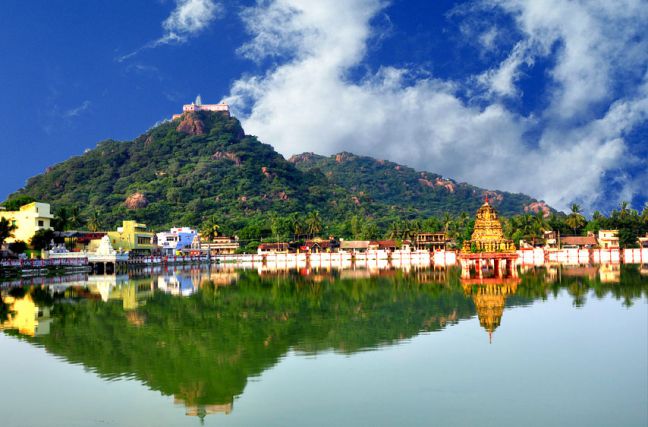
Vedagiriswarar temple is a Hindu temple located in Tirukalukundram (also known as Thirukazhukundram), Tamil Nadu, India. Thirukalukundram is one of the most famous pilgrim centres in Tamilnadu, renowned for its Hill Temple ad Sangu Theertham. It is named after the sacred Eagles who visit every noon at the Hill Temple called Pakshi Theertham and the Kailash of South India. ‘Kazhugu’ in Tamil means ‘eagle’ and ‘kundram’ the ‘hill’, hence the name of the place Tiru Kazhu Kundram. Even today two eagles visit the temple every day to accept the sweet rice offered to them. To watch these eagles taking the food is a rare experience. After a darshan of Vedagiriswarar, devotees eagerly await the arrival of the eagles just before noon. They wait in large numbers at a shed specially erected for the purpose. After cleaning a particular spot on the adjacent boulder, the temple priest sits down, with the food (sakkarai pongal). Two eagles, after circling around temple top, come near the priest walking. They eat the balls of rice and after cleaning their beaks in the water kept in a small vessel nearby, take off, circle around the tower again and fly off. This has been going on for centuries now. Many tales are told about the visit of the two eagles. Two rishis (sages) — Pusha and Vidhadha were cursed by Lord Siva to become eagles, for some indiscretion. It is believed that these are the two eagles that visit Thirukazhukundram daily for time immemorial, in order to worship Siva and to obtain salvation from His curse. It is said that after a bath in the Ganges in the morning, they come here at noon for food, reach Rameswaram in the evening for darshan and return to Chidambaram for the night. Legend says they would regain their original form and attain moksha (salvation) at the end of Kali Yuga. Hence this place derived the name `Tirukazhu(gu)kundram’ (the hill of the sacred eagles) and also Pakshi Thirtham (in Sanskrit), meaning “water made Holy by the visit of birds”.
This is also the place where Saint Sundarar got gold from Lord. Vedas are in the form of this hill. Crores of Rudras and Siddhas performed penance and attained salvation here. The environment is so suitable for those to do meditation peacefully. The glory of the place and Lord of the temple are praised by Saivite saints, Pattinathar and great poets.
4) FEMALE VINAYAKA
Images of Vigneswari (a feminine form of Vinayaka) is also enshrined in the Thanumalayan Temple in Suchindram. While Vinayaka appears with an elephant head and a human body, Vigneswari is seen with the elephant head and a female body. She is worshipped in the Sukhasana pose. Here, Goddess Vigneswari is considered as a form of Shakti, rather a Yogini Devata.
5) GHEE TURNS TO BUTTER
Gavi Gangadhareshwara Temple, also known as Gavipuram Cave Temple is dedicated to the Hindu deity, Lord Shiva and is a famous ancient cave temple located in Hulimavu, Bannerghatta Road in Bangalore, Karnataka, India. The temple is renowned due to a significant and almost magical phenomenon that occurs in the temple every year on a particular day in the month of January. It is unique & one of its kind because it is known that if one offers ghee in this temple and the priests apply the ghee on the Shiva lingam & rub on it, then the ghee turns into butter miraculously, No technology can convert ghee back to butter yet, but here it’s possible, Infact many devotees carry ghee from their homes to the temple & watch it turn into butter. The whole thing happens in front of one’s eyes only.
Apart from the wonderful phenomenon, the temple also stands as a glaring example of the marvelous Indian rock-cut architecture.
6) KERALA’S OLDEST SHIVALINGAM
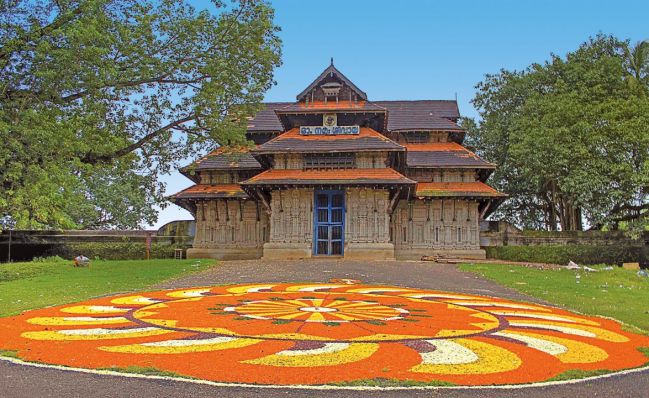
This is the first Shiva temple created by Lord Parasurama. Shiva here is more popularly known as Vadakkunnathan. Vadakkunnathan Temple is situated at the heart of Thrissur city. The name Thrissur is derived from ‘Thiru-Shiva-Peroor’, which literally translates to “The city of the sacred Shiva”. Thrissur was also known as Vrishabhadripuram, Vrishachala and Thenkailasam or Dakshina Kailasam (Kailasa of the south) in ancient days. Shiva is worshipped in the form of a huge lingam, which is covered under a mound of ghee, formed by the daily abhishekam (ablution) with ghee over the years. A devotee looking into the sanctum can now see only a 16-foot-high (4.9 m) mound of ghee embellished with thirteen cascading crescents of gold and three serpent hoods on top. According to traditional belief, this represents the snow-clad Mount Kailash, the abode of Shiva and Parvati. This is the only temple where the lingam is not visible. It is said that the ghee offered here for centuries does not have any foul odour and it does not melt even in the hot tropical climate of Kerala or with the heat of the hundreds of bright oil lamps burning nearby. Small scrappings of this solidified ghee are given to devotees as ‘Prasada’, which is believed to have medicinal and curative properties.
7) LORD ROBERT CLIVE, A VISHNU DEVOTEE
Varadharaja Perumal Temple at Kanchipuam, Tamil Nadu, dedicated to Lord Vishnu is one of the Divya Desams, the 108 temples of Vishnu believed to have been visited by the 12 poet saints, or Azhwars. This temple of great antiquity is also famous for the unique distinction of possessing Magarakanthi – grand necklace purported to have been gifted by none other than Robert Clive, the man who built the foundation for the British Empire. We know that he took up the first job in East India company at Madras (Chennai) and rose from a lowly clerical position to a powerful post by dint of hard work, intelligence and superior quality of administrative and military leadership without the advantage or the luxury of good English education unlike other English offers .
Being a great devotee of Lord Vishnu, the gift by Robert to the Hindu temple at Kanchipuram was accepted with grand celebration and the deity is adorned with the grand necklace on certain festival days like Brahmotsavam, etc.
One says that Robert took part in a battle near Kanchipuram on the way back from Tiruchinopoly, to relieve the town and in the war he had a narrow escape from near death when a canon fell near him. After his safe return, he had, therefore, made the gift to the temple.
Another Clive biographer claims that Robert Clive caught in a severe thunderstorm took shelter in the Varadaraja Perumal temple where he fell ill seriously. He miraculously recovered the following day after his prayer to the deity in the temple. It is likely as a token of his gratitude to the Hindu God, he made the gift to the Vishnu temple.
8) NO SALT FOR THIS GOD
In this temple Salt is not allowed inside the temple & neither is it used in any food preparations, as the lord had promised that he would partake food without salt in this sthalam. But surprisingly, the temple prasadams like Puliyogara (tamarind rice), Pongal (rice & pulses kichdi), Dhadhyonnam (curd rice) etc taste just as it would if salt were to be added, when you eat it you realise that there is no salt, but you won’t miss the taste. This temple Perumal is considered to be the Annan (elder brother) of Tirupati balaji, if you are unable to visit Tirupati, visiting this temple & offerings to the hundi is considered to be the same as visiting Tirupati. This temple is one of the 108 Divya Desam temples of Vishnu. Oppliliappan Kovil is around 5kms from Kumbakonam Tamil Nadu.
9) NO VAIKUNTA DWARAM IN SRIRANGAM
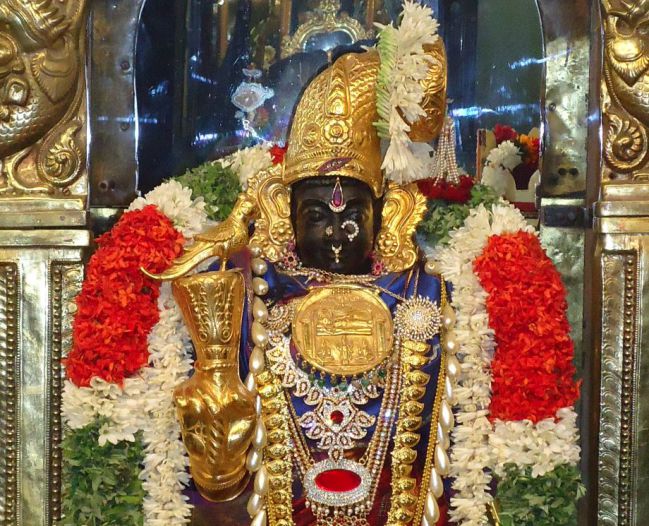
Every Vishnu temple has a door called Vaikunta Dwaram, which is opened only on two days, Vaikunta Ekadasi & Vaikunta Dwadasi. It is believed that anybody (whether a sinner or a sage) having darshan on these days through this door means entering Vaikuntam & attaining moksha. But Srirangam does not have a Vaikunta Dwaram because this temples is in itself Booloka Vaikuntam (Heaven on Earth). Srirangam is the first & foremost among the 108 Divya Desam temples of Vishnu.
10) RAMA HOLDING SEETA’S HAND
In the Erikaatha Raama temple, Madhuranthagam, we can see Lord Raama holding Seetha’s hands, Now you may wonder what’s so unique, Well, just think of any God, any temple, can you recollect any God holding his Consort’s hand! Another legend says that during the British colonial times, the water level in the Maduranthagam reservoir (which incidentally supplies drinking water to Chennai) was in the verge of being breached. And the British governor of Chennai had supposedly prayed in this temple for the safety of the place. And the god obliged. Hence the name Eri kaatha Raamar Eri=lake/reservoir & Kaatha=safegauarding. Madhuranthagam is near Chennai, Tamil Nadu.
11) SHIVA AND VISHNU TOGETHER
Usually a small Shiva shrine is found in a major Vishnu temple or a small Vishnu shrine in a major Shiva temple. But only in Chidambaram, we find these two gods equal in one major temple. Here, Shiva manifests as Nataraja and is one of the Pancha bhoota sthalams. In the same temple almost facing him is Lord Vishnu giving darshan in his sleeping form as Govindaraja Perumal (One of the 108 Divya Desam temples of Vishnu). Both the Gods almost face each other. Infact in one particular spot (clearly marked on the floor) we can have darshan of both Shiva and Vishnu.
12) SITTING KARTHIKEYA
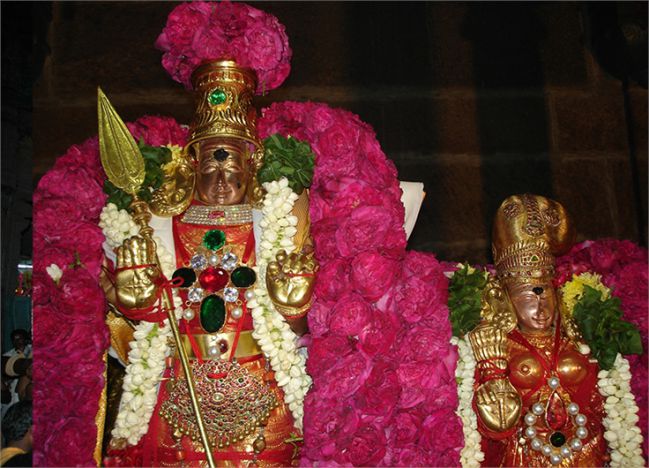
Lord Karthikeya or Murugan temple in Thirupparankundram near Madurai, Tamil Nadu is the only temple where Murugan is giving darshan sitting. Generally Murugan is depicted standing in all temples, never sitting or sleeping, like in Kukke Subramanya, he is found riding his peacock. Here in Tiruparankundram can we find Muruga in a sitting pose, because it is his Wedding Pose (Kalyana Tirukolam).
13) VISHNU IN DEVI TEMPLE
A major Vishnu temple, Adi Varaha Perumal temple (One of the108 Divya Desam temples of Vishnu) is found inside the famed Kamakshi Amman temple in Kanchipuram, a unique feature found nowhere else.
14) VISHNU DARSHAN THROUGH THREE DOORS
Only in Anantha Padmanabhaswamy Temple, Trivandrum & Adi Keshava Perumal temple, Tiruvattaru, two of the 108 Divya Desams, can one see Vishnu through three doors. The idols in both the temples are huge & one has to see them through three doors : One door for his face, one for his chest & mid portion and the last one for his lotus feet. Infact only on Vaikunta Ekadasi day can we see him fully through a separate door, Vaikunta Dwaram.
15) VISHNU AS NARASIMHA

In Prahalada Varadhan Perumal Temple, Ahobilam, Lord Vishnu gives darshan as Narasimha (half man-half lion), In this kshetram, he gives darshan as Narasimha in Nine forms, ie., Ugra Narasimhar, Krodha Narasimhar, Jwala Narasimhar, Malola Narasimhar, Chathravata Narasimhar, Yogananda Narasimhar, Bhavana Narasimhar, Karanja Narasimhar and Barghava Narasimhar. This temple is one of the 108 Divya Desam temples of Vishnu, and one of the only two divya desams found in Andhra Pradesh, the other being Tirumala Tirupati Devasthanams.
16) VISHNU GYMNASTIC POSE
Vishnu gives a unique pose by lifting one leg up in the sky & the other on earth, like a Gymnastic pose in three temples. This is basically of the Vamana Avatar wherein Vishnu has measured the three worlds in three steps. He gives darshan in this pose in three temples, Ulagalantha Perumal Kovil, Kanchipuram, near Chennai, Trivikrama Perumal Kovil, Sirkazhi, near Chidambaram & Trivikrama Perumal Kovil, Tirukovilur, near Tiruvanamalai, three temples for three steps. All the three temples are a part of the 108 Divya Desam temples of Vishnu. Tirukoviloor is near Tiruvannamalai, Tamil Nadu.
17) ALLOWANCE TO TOUCH THE LORD’S FEET
Vittobha or Vitthal Temple in Pandharpur is one of the rare temples where everyone is allowed to touch the main deity’s feet, irrespective of caste & creed.
18) TEMPLE TOWER AS STATE EMBLEM
The Rajagopuram of the Sriviliputhur Andal Vatapatrasayee temple is the official emblem of the state of Tamil nadu. This temple is one of the 108 Divya Desam temples of Vishnu and is around 75kms from Madurai.
19) TEMPLE TOWER REMAINS UNFINISHED
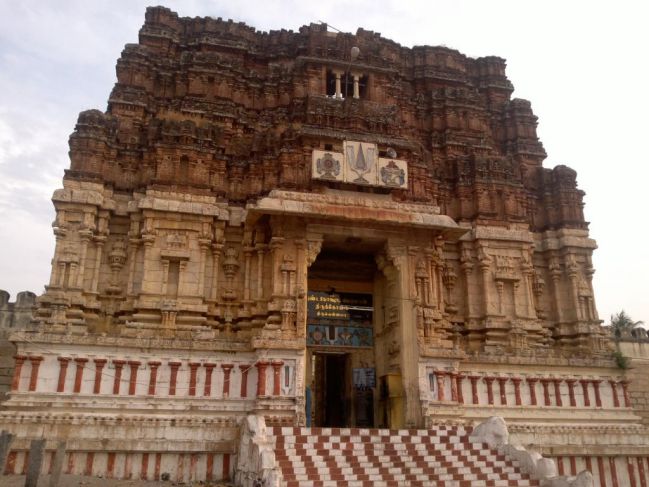
The Rajagopuram of Pundarikaksha Perumal temple, Tiruvellarai, near Trichy (One of the 108 Divya Desam temples of Vishnu) is in an unfinished state till today. The Rajagopuram was being built by the Vijayanagar Kings, when they lost the final battle at Talikota (Rakkasa Tangadi) against the Decan Sultanate, sounding the death-knell to the last great Hindu kingdom in South India. The work on the Rajagopuram stopped, never to be revived again. It is a pity that the great Vijayanagar Emperor Sri KrishnaDevaRaya couldn’t finish the temple work, though he has built some of the best & still preserved Rajagopurams in South Indian temples like Tirupati, Tiruvanamalai, Srikalahasti, Kanchipuram etc. Though efforts have been made, till date the rajagopuram has not been completed.
20) STONE IDOL OF GARUDA
There is a unique specialty regarding the stone idol of Garuda, vehicle of Lord Vishnu at the at Tirunarayur/Nachiyar Kovil. This Kal Garuda’s weight doubles every few steps when taken out for a procession, until he steps out of his sannathi he can be easily carried by 4 persons. Then inside the temple his weight is known to increase as to be carried by 8 persons, then further outside the praharam he weighs heavier and as many as 16 persons are required to carry him, then 32 individuals carry him. Totally outside the temple not even 64 persons are enough to carry him and he would keep on getting heavier and heavier ahead. He would sweat a lot too so that his cloths get drenched in the sweat. But after the procession is over, while returning to his sannadhi he would start losing his weight (step by step) or (stage by stage). This is a remarkable wonder that takes place only at Tirunarayur/Nachiyar Kovil near Kumbakonam, TamilNadu. This temple is one of the 108 Divya Desam temples of Vishnu. Another unique feature of this temple is that all 108 Divya Desam idols are there in this temple.
21) STRANGE RITUAL IN TIRUPATI
Since Lord Vishnu likes the flowers worn By Andal, Srivilliputtur Andal temple sends the flowers adorned by her to Tirumala Tirupati Devasthanam for the annual BRAHMOTSAVAM of SRIVARI. Only after the flowers (which have been sent by Srivilliputtur) are adorned on the main deity, does the DWAJAROHANAM ceremony begins (Indicating the start of the 9 day BRAHMOTSAVAM). This temple is one of the 108 Divya Desam temples of Vishnu which is near Madurai.
22) VISHNU IN FEMALE FORM
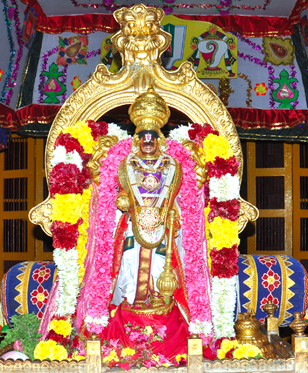
Located 13 kms from Madurai, and 9 kms south of Melur, the Kalamega Perumal temple is among the 108 Divya Desam of God Vishnu. It is the 46th Divya Desam. Here the Pushkarani is known as Swetha pushkarani and vilwam is sthala vruksham of the temple. This Kalamega Perumal Temple is the only Vishnu temple in the world dedicated to the Female Incarnation of God Vishnu – “Mohini”. In this temple God Vishnu gives darshan to devotee as Kalamega Perumal with his consort Mohana Valli Thayar.
Once the Devas and Asuras together churned the ocean of milk to derive the nectar of immortality (Amurdham). When Dhanvantari emerged with a pot containing Amrudham, both the Devas and the Asuras started fighting. To save the nectar from the Asuras and distribute it to the Devas, God Vishnu took the form of a beautiful and enchanting damsel “Mohini”. Mohini distracted the asuras, took the amrita, and distributed it among the Devas, who drank it.
According to another legend, once God Shiva granted a boon to the demon Bhasmasura, bestowing on him the power to reduce anyone into ashes when touched. The evil demons chased God Shiva with the notion to turn him to ashes to test his power. God Shiva fled as he was constantly escaping the touch of the evil demon. Lord Shiva turned to Lord Vishnu for help and protection. Lord Vishnu on hearing Shiva’s problem, agreed to help him out. Lord Vishnu assumed the form of the beautiful and attractive Mohini. The demon was totally captivated by Mohini and forgot about Shiva. He desired nothing but marrying Mohini. Mohini agreed on condition that Bhasmasura should copy each of her dance steps. Bhasmasura accepted the Mohini’s condition and began to dance with Mohini. As Mohini placed her hand on her head, Bhasmasura followed Mohini, thus reducing himself to ashes.
23) VISHNU SLEEPING IN OPPOSITE DIRECTION
Generally MahaVishnu is depicted sleeping on his right hand (in movies, photos, paintings etc), Adi Keshava Perumal temple, Tiruvattar is the only place where he is giving darshan sleeping on his left hand. The positive energy & vibrations flowing out of the sanctum sanctorum only have to be felt, one cannot explain in mere words.This temple is one of the 108 Divya Desam temples of Vishnu. The temple is constructed in such a manner that the sun’s rays fall on the feet of the deity’s image from the third to the 8th day of the tamil month of Panguni and on the 3rd and the 4th days of the tamil month of Purattaasi. Another speciality of this sthalam is the way in which the perumal is positioned. He is found in such a way that everyday he gives his seva to Chandran, the moon god. During the setting of sun, the rays of the sun is falling on the Moolavar’s face as though it says that it will leave today and come tomorrow. After the sun sets, the moon appears (or) rises from the same direction where the sun sets and first sees the Moolavar and gets his dharshan. Tiruvattaru is located between Kanyakumari & Trivandrum, near the famous Padmanabhapuram Palace, Tamilnadu-Kerala border.
24) VISHNU’S WEAPONS INTERCHANGED
Lord Vishnu is depicted with his discus Sudharshan Chakram on his right shoulder & his conch Panchajanyam on his left shoulder. Only in the Trivikrama Perumal temple in Tirukoviloor, these two weapons are interchanged; the chakra in on his left & the Panchajanya is on his right. This temple is one of the 108 Divya Desam temples of Vishnu. Tirukoviloor is situated around 35kms from Tiruvanamalai, Tamil Nadu.
25) VISHNU WITH MOUSTACHE
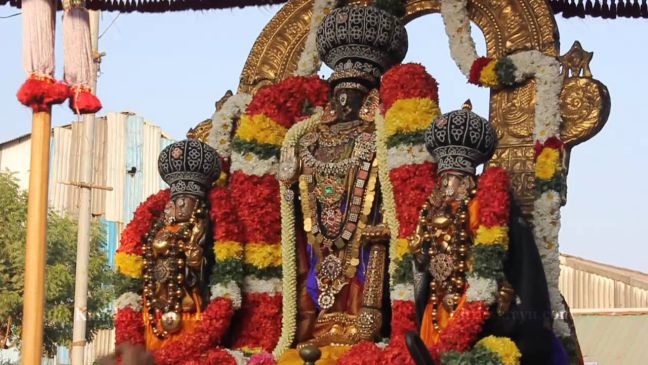
Among the various differences between God & man, it is generally it accepted that Gods don’t have moustache, Gods don’t blink their eyelashes neither do Gods don’t sweat. But, in the Triplicane Parthasarathy temple, Lord Vishnu gives darshan as Krishna, the charioteer of the Kurukshetra War. In this temple, Lord Krishna sports a moustache, & has his Conch, the Panchajanya in his hands unlike on his shoulders. His face bears the scars, which were the arrow marks from Pitamaha Bheeshma’s bow. This temple is one of the 108 Divya Desam temples of Vishu.
26) VISHNU’S EXTENDED FAMILY
Triplicane is situated at the heart of the Chennai City and in the Parthasarathy temple here resides a Vishnu deity which is 9 feet tall. This is the only Krishna temple where Lord appears with the moustache of a Sarathi – conducting Arjuna’s rath in the Gurukshetra battle field. He is also seen with His whole family, Sri Rukmini (consort) nearby, Sri Mahalakshmi in Chest, brother Balarama (elder brother) to his right and Satyagi to the left, son Pradyumna and grandson Aniruddha. This is the only temple out of the 108 Divya Desams of Vishnu, where 3 generations of his family are displayed. Nowhere can one see such a spectacle.
27) VISHNU’S THIRD EYE
Generally Lord Shiva is the only God to have the third eye (netrikkan) on his forehead. This is the only place where Vishnu is giving darshan having have the third eye (netrikkan) on his forehead, here Devanatha Perumal represents Lord Brahma having the lotus flower in his hand and representing Lord Shivan having the eye in his fore – head and representing Sri Vishnu along with Shankk and Chakram. This temple also has huge image of Lord Hayagreeva, Vishnu with a horse face, he is the supreme lord of knowledge & was supposed to be the Guru for Saraswati. This temple is one of the 108 Divya Desam temples of Vishnu. Tiruvahindrapuram is near Cuddalore, Tamil Nadu.
28) WHITE MILK TURNS TO BLUE
Raahu is the king of snakes and he is manifested in the Tirunageshwaram temple with his consorts Naga Valli and Naga Kanni.
Rahu, one among the nine planets and belongs to the race of Snakes deities worshipped Lord Shiva here on Sivarathri day to redeem himself from the curse of Susimba Rishi. Since Lord Rahu worshipped lord shiva here, the place was named as Thirunageshwaram.
Sundays are very auspicious for Rahu / Raaghu poojas and devotees perform Paal (milk) Abhishekam to Rahu. The unique feature existing here is that during the Abishekam (oblation) the color of milk changes from white to blue when poured upon the idol and again changes back to white when it has flown through the idol. This has been seen by common people.
Performing Abishekam on Sunday Rahu kalam is believed the most auspicious. If not possible, it can be do ne on other days too.
This temple is one of the 9 Navagraha Temples of Tamil Nadu and is about 5kms from Kumbakonam.

